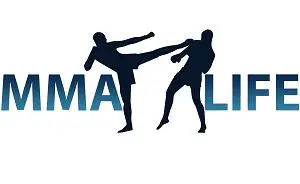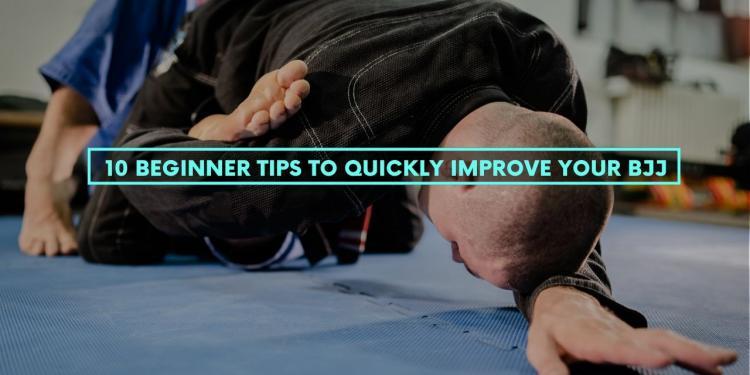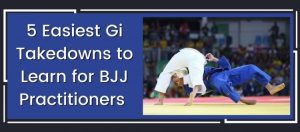When it comes to Brazilian Jiu Jitsu (BJJ) nothing beats mat time, consistency and good hands-on instruction. With that said, there are a few things that you can do to help speed up your development. As a beginner it can be a daunting task to navigate the information available, so here are our best tips for speeding up your BJJ progress.
1. Less Passive Drilling, More Active Drilling
Is there such a thing as too much drilling? I think so. At least passive drilling that is. Passive drilling is going through the motions of the technique alone or with a partner, but with no or very little resistance. Obviously there is a time and place for passive drilling, especially when you are new and don’t quite know how to move your body yet. You should passively drill the technique until you can do the movement fluidly. Then stop there and move onto active drilling. Because after that, the return on investment for every additional rep is very minuscule.
Active drilling is pressure-testing your technique by practicing the techniques with resistance. Have your partner gradually ramp up the resistance as you get more comfortable with the technique. Also try situational rolling where you roll with the intent of pulling off the technique. When I do situational rolling, my partner and I usually reset once the technique has been pulled off or neutralized. You want to reset because you want to get in as many reps as possible. A good example of situational rolling is Tim Ferriss’ video of him praticing jiu jitsu at Marcelo Garcia‘s gym. He went there to learn the guillotines. Then at the end of video, he rolled with the intent of pulling off as many guillotines as possible. You can see the video below.
Tim Ferriss and his friend Josh Waitzkin (Marcelo Garcia black belt) aren’t the only fans of situational drilling. Kit Dale, who attained his black belt in 4 years, is famously against passive drilling.
2. Learn the language
Knowing and understanding the names and the hierarchy of the positions and guards is essential in order to progress. Although, this will eventually come through the teachings in class, familiarizing yourself with the guards and positions, and how they’re connected, will speed up your progress significantly.

Stephen Kesting offers an excellent resource for understanding the positional hierarchy with his free online map of BJJ positions: “A Roadmap for Brazilian Jiu Jitsu” which is available here: https://www.grapplearts.com/bjj-roadmap-book/
3. Conceptual thinking
Once you’re familiar with the positions in BJJ, understanding concepts can help speed up your progress. While drilling a technique is a tried and tested method of improving, understanding the conceptual framework that techniques fit into will provide you with more of an overview and allow you to combine different techniques and positions. There are a lots of resources available online, but both Jon Thomas’ and Ryan Hall’s instructionals are known for their conceptual approach.
4. Learn a takedown or two
While most BJJ gyms are notorious for snubbing takedowns, all competitions and self-defense situations will inevitably start standing. Having at least one takedown in your arsenal that you feel proficient with will give you some confidence. Being able to control the fight is key, and even if you’re a guard-player, it is always preferable to at least have the option to choose, rather than being forced to pull guard out of necessity.
In my opinion, these are the high-percentage takedowns that are the easiest to land in jiu jitsu:
With a gi:
1. Outside leg trip
2. Knee tap
3. Lapel drag
Without a gi:
1. Single leg
2. Arm drag to back take
The takedowns above require very little penetration (aside from the single leg) so can be done without exploding into the takedown.
5. Breaking the fall
At the Kodokan, the birthplace of judo in Japan, beginners practice break-falls almost exclusively the first months of their training. This is due to the fact, that although you may be extremely proficient at throws and takedowns, you will undeniably also be on the receiving end of a throw at some point in time. Practicing break-falls will make you less injury prone and less apprehensive about attempting your own takedowns.
6. Improve your flexibility and mobility
Stretching is beneficial for BJJ players for at least two reasons: it makes you less prone to injury and your increased flexibility may make your guard harder to pass. Some of the most successful competitors are super flexible, and while you may not need to have the flexibility of a yogi, stretching will help you train for longevity. There are a wide range of stretching and yoga resources available online, but particularly Sebastian Brosche’s ‘Yoga for BJJ’ is praised in the BJJ community, as well as being geared specifically for BJJ athletes.
If you are busy and do not have time to do a whole yoga routine, then do exercises that makes your hips, thighs, and glutes more flexible and mobile. Hips, thighs, and glutes are extremely important in jiu jitsu. I remember initially not being able to hold onto my triangles because my inner thighs would tighten up. So make sure you do a lot of functional mobility exercises that allow your hips to be flexible and mobile.
7. Get those gains
BJJ has been marketed as the martial art that enables smaller and weaker people to defeat bigger and stronger opponents. While this may be true, no one ever complained about being too strong, and there is a reason that the bigger and heavier competitors generally dominate the absolute divisions. Even if you aren’t particularly interested in being stronger, a little strength training will prepare your joints for the taxing undertakings of BJJ and make you less susceptible to injury. So start swinging those kettle bells and do some pull-ups. You don’t have to train like a weight-lifter but you should at least do some calisthenics to train your body to be functionally strong.
8. Practice escapes
It might not let you finish the fight, but escapes are crucial in any BJJ player’s game. While passing, transitions and submissions tend to be more popular areas to drill, being good at escapes will help your overall game. Competitors such as Jeff Glover and Garry Tonon structure their game around their ability to escape and create scrambles. As it can be extremely difficult to control and submit higher belts, beginners can also use their escaping abilities, as a gauge of their progress. Garry Tonon recently released “Exiting the System”, which is an excellent resource for anyone looking to improving their escapes.
In the beginning stages of your jiu jitsu journey, you will find yourself in plenty of disadvantageous situations. Savor these moments. They give you an opportunity to refine and improve your escapes. In fact, the best jiu jitsu players I know like to start rolling in disadvantageous positions in order to improve their escapes.
9. Structure your training
Some gyms have extremely structured curricula, while other gyms rely more on the disposition of the coach. Whichever is the way of your gym, it is always beneficial to complement the teachings in class. Taking notes in/after class will help you retain details and let you remember the techniques later. Similarly making mind maps can help you get an overview of your game and options from various positions. Youtube is a two-edged sword; on the one hand it is a wonderful tool for aiding your coach’s instructions or finding techniques to fill the holes in your game. On the other, it can also be a rabbit hole of over the top rolling back takes and dubious techniques, so use it carefully.
10. Listen to your body
This may sound redundant, but it’s easy to overdo it, when you’ve just fallen in love with the sport. Remember to listen to your body and give it time to rest. While sitting out may suck, letting injuries heal and allowing your body to rest is crucial if you’re in it for the long run. Also, if in doubt see a doctor, DON’T ask the internet.
Article Written By: Tristan Regan




